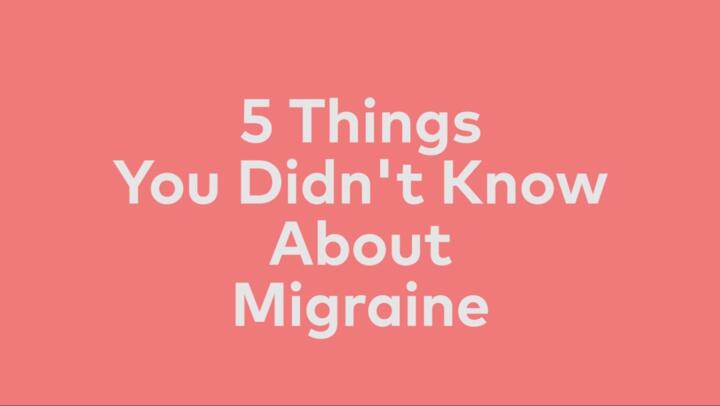This article will describe dysautonomia types, causes, symptoms, and diagnosis. It will also explore dysautonomia treatment options and resources for people living with ANS dysfunction.
What is dysautonomia?

Dysautonomia means any part or all of your ANS is not working properly. Another name for it is
Dysautonomia can develop at any age and affects people of any gender or race. It can be inherited and present at birth or it can start later in life. Autonomic dysfunction may be a complication of pregnancy, surgery, bodily trauma, or medical conditions that damage nerves, such as diabetes, Guillain-Barre syndrome, multiple sclerosis, and certain infections.
Many different symptoms can occur, depending on the affected nerve(s). For example, if it involves the nerves regulating the heart, you could develop a rapid heartbeat. If it involves the sweat glands, you could develop excessive sweating.
For some people, the symptoms are mild and intermittent, and they may go away. Others experience more disabling, ongoing, and severe symptoms.
Treatment of the underlying cause of dysautonomia may improve symptoms. There are also treatment options for the symptoms themselves, including medication and lifestyle modifications. However, there is no cure for dysautonomia.
What are the different forms of dysautonomia?
Primary dysautonomia is a type in which the ANS is the only system affected. Secondary dysautonomia is part of another condition, such as Parkinson’s disease or diabetes.
Forms of primary dysautonomia include:
- Postural orthostatic hypotension syndrome (POTS): This type affects up to 3 million people in the United States, with adolescents or younger females most likely to experience it. POTS causes blood flow circulation problems, so that when you stand up, your heart beats too fast. This can result in fainting or dizziness, shortness of breath, and chest pain.
- Neurally mediated syncope (NMS): Previously known as neurocardiogenic syncope, NMS causes a drop in blood pressure upon standing, which can make people faint.
- Vasovagal syncope: A type of NMS that can be brought on by emotions, such as fear or pain. The syndrome is
more common Trusted Source PubMed Central Highly respected database from the National Institutes of Health Go to source in children and young adults but can occur at any age. It tends to run in families. - Familial dysautonomia: Also known as Riley-Day syndrome, this inherited disorder is caused by a mutation in the ELP1 gene. Symptoms often appear during infancy and include poor muscle tone, lack of tears, and poor feeding. One-third of children who have the syndrome experience learning disabilities. Other symptoms include decreased sensitivity to pain and trouble regulating body temperature. It is most likely to affect people of Eastern European descent, particularly Ashkenazi Jews.
- Pure autonomic failure (PAF): People are typically 60 or older when PAF develops. It is also known as Bradbury-Eggleston syndrome. PAF symptoms include dizziness, fainting, visual problems, chest pain, and fatigue, all of which are due to a sudden drop in blood pressure upon standing. If you sit or lie down, symptoms usually go away.
- Multiple system atrophy (MSA): This is a rare, life threatening form of dysautonomia that develops after age 40. Also known as Shy-Drager syndrome, MSA is a neurodegenerative and fatal condition within 5 to 10 years of diagnosis.
What are the symptoms of dysautonomia?
Because dysautonomia can be local or general and affect many nerve pathways,
Common symptoms of dysautonomia
Contact a medical professional for any of these symptoms:
- change in sweating: either too much, too little, or none
- headaches
- gastrointestinal problems, such as:
- urinary symptoms, such as:
- frequent urination
- excessive nighttime urination
- urgency
- stress incontinence
- retention of urine
- sexual problems, such as:
- erectile dysfunction
- vaginal dryness
- lowered libido
- sensitivity to light
- shifts in body or skin temperature
- fainting, dizziness, feeling lightheaded or unsteady, and weakness due to a drop in blood pressure upon standing
- sleeping problems
- trouble concentrating, or “brain fog”
- low blood sugar
- trouble swallowing
- blurred or dimmed vision
- shortness of breath
- chest pain or discomfort
- fast or slow heart rate or palpitations
Serious symptoms
Dysautonomia can be life threatening. In general, you should seek immediate medical care (call 911) for any of these symptoms:
- chest pain that lasts more than a few minutes or is accompanied by shortness of breath, fainting, sweating, nausea, or weakness
- heart rate over 100 beats per minute at rest, unless you have an existing diagnosis and your doctor has advised otherwise
- irregular heartbeat or palpitations
- sudden trouble breathing
What causes dysautonomia?
Dysautonomia causes include genetic conditions, other medical conditions, and drug and medication toxicity.
Genetic dysautonomia
Some dysautonomias run in families. A mutation in ELP1 causes familial dysautonomia. It affects 1 in 3,700 people of Ashkenazi Jewish descent.
POTS also tends to run in families. POTS is often triggered by events, such as pregnancy, surgery, trauma, or a viral illness. Some underlying causes of POTS are genetic in nature, such as Ehlers-Danlos syndrome.
PAF is caused by abnormal accumulation of a protein, alpha-synuclein, in the autonomic nerves, which impairs their ability to communicate. Other conditions related to mutations in the alpha-synuclein gene
Other causes
Secondary dysautonomia can occur as a complication of another illness. Some conditions in which dysautonomia may occur include:
- autoimmune disorders, such as rheumatoid arthritis, lupus, Sjogren’s syndrome, Crohn’s disease, Guillain-Barre syndrome, and myasthenia gravis
- diabetes and prediabetes
- celiac disease
- Ehlers-Danlos syndrome, a genetic disorder that affects the body’s connective tissue
- neurodegenerative diseases, such as Parkinson’s disease, Alzheimer’s disease, and multiple sclerosis
- infections, including HIV, COVID-19, Lyme disease, and tetanus
Learn more about the long-term effects of COVID-19 here.
Other possible triggers for dysautonomia include:
- bed rest from a long illness or recovery
- medications, including diuretics, antianxiety drugs, high blood pressure medicines, and others
- toxicity from excess alcohol, chemotherapy drugs, or heavy metals
- vitamin deficiency
What are the diet and nutrition tips for dysautonomia?
Your doctor may give you diet and nutrition advice to help improve the symptoms of dysautonomia. Recommendations vary depending on the type of dysautonomia you have as well as other factors specific to your health, such as heart or kidney function.
General recommendations might include:
- eating extra salt, usually by about 2 to 4 grams (g) per day, to raise blood pressure (1 teaspoon of salt contains about 6 g of sodium)
- avoiding alcohol, because alcohol can cause dehydration, lower your blood pressure, and damage the nervous system
- avoiding caffeinated energy drinks, which have been linked in some studies to the development of POTS in younger people
- eating at least five servings of fresh fruits and vegetables daily
- drinking water throughout the day
- limiting or avoiding caffeine
Ask your healthcare professional for guidance before making significant changes to your diet.
How do doctors diagnose dysautonomia?
One common
Other tests your doctor may order can depend on your symptoms. Some common ones to help diagnose dysautonomia and the underlying cause of it include:
- active standing test to assess heart rate and blood pressure at intervals of 2, 5, and 10 minutes after you stand up from a lying down position
- blood tests for:
- organ function
- glucose (sugar) level
- iron level
- autoantibodies
- urine tests
- sweat tests
- electrocardiogram
- echocardiogram
- imaging tests, such as a CT scan or MRI scan
To diagnose your condition, your doctor or other healthcare professional will ask you several questions related to your symptoms. These may include:
- How long have you been experiencing symptoms?
- Have your symptoms been continuous or occasional? When do they occur?
- How severe are your symptoms?
- What seems to worsen your symptoms?
- Does anything help to relieve your symptoms?
By reaching an accurate diagnosis of dysautonomia and the cause, your doctor can work with you to develop an effective treatment plan.
How do you treat dysautonomia?
Treatments for dysautonomia
Depending on your individual symptoms, treatment of dysautonomia may include:
- adding salt to your diet to prevent low blood pressure
- avoiding caffeine and stimulant drugs, which can raise your heart rate
- avoiding heat, sun, and humid environments
- breathing therapies to address breathlessness and hyperventilation syndrome
- eating small, frequent meals that consist of low fat, high fiber foods rather than heavy meals
- staying hydrated by drinking plenty of fluids each day
- engaging in 20–30 minutes of exercise daily
- standing up slowly to avoid dizziness and crossing your legs while standing to prevent fainting
- raising the head of your bed by about 4 inches to combat low blood pressure
- taking medications to raise your blood pressure or regulate heart rate
- wearing compression garments to increase blood circulation
You should avoid things that trigger your symptoms. These may include:
- alcohol consumption
- dehydration
- hot environments
- stress
- tight clothes
Complementary or alternative treatments for dysautonomia
Some alternative remedies may help relieve dysautonomia symptoms. Check with your doctor to make sure they will not interfere with your medications or other treatment.
Complementary treatments would coincide with medical care — not replace it. Alternative therapies for dysautonomia include:
- acupuncture
- massage therapy
- yoga on a mat or in a chair
- supplements as recommended by your doctor
What are some coping tips for living with dysautonomia?
Life with dysautonomia can be challenging. It is important to focus not only on treatments that can help the physical symptoms but also take care of your overall health and well-being. This can include eating nutritious foods, exercising, sleeping well, and practicing stress management.
Lifestyle recommendations could involve:
- preparing meals ahead of time when you are feeling well
- avoiding sugary foods and drinks, which can trigger stomach upset
- focusing on getting quality sleep:
- limit caffeine and avoiding it after 2:00 p.m. if you sleep at night
- avoid exercising within 4 hours of bedtime
- avoid digital screens near bedtime
- managing stress:
- complete your most important tasks when you are feeling your best
- ask for help in completing tasks, such as grocery shopping or cleaning
- talk to a counselor to work through your concerns and frustrations
What resources are available for people with dysautonomia?
Dysautonomia may be viewed as a non-apparent illness because its affects occur inside of the body, where no one can see. Living with a condition that others may not understand can be isolating, so support from people who do understand it is vital.
Here is a list of dysautonomia resources:
- Dysautonomia Information Network
- Dysautonomia Youth Network of America, Inc.
- Dysautonomia International
- Familial Dysautonomia Foundation, Inc
- National Dysautonomia Research Foundation
- Dysautonomia Support Network on Facebook
- PoTS UK
- The MSA Coalition
- Clinical trials in the U.S. and abroad
What are the potential complications of dysautonomia?
Dysautonomia can result in mental and behavioral health problems as well as more severe medical problems.
A
Another possible complication is cognitive dysfunction or brain fog, reported by 80–90% of people being treated at Vanderbilt University’s Autonomic Dysfunction Clinic.
Other complications are more serious. Dysautonomia can be fatal if it leads to:
- acute respiratory failure
- pneumonia
- sudden cardiopulmonary arrest
Outlook
The outlook for people with dysautonomia varies widely depending on the severity of the condition.
People with POTS respond well to treatment. Studies show it does not reduce life expectancy. However, it can reduce quality of life and cause disability.
When dysautonomia worsens with time or is due to a condition that worsens with time, the outlook is less favorable. Treating the underlying condition and managing symptoms with medication and lifestyle modifications can help.
Some forms of dysautonomia, including MSA and familial dysautonomia, are severe and shorten life expectancy.
Summary
Dysautonomia refers to problems with your involuntary nervous system. Usually it is underactive, but sometimes it is overactive. The ANS regulates your heart rate, blood pressure, breathing, and body temperature, among many other functions. Because of these wide-ranging functions, autonomic dysfunction can produce many kinds of symptoms that appear unrelated, such as:
- erectile dysfunction
- sweating
- fast heart rate
- lightheadedness
Any condition that damages or disrupts the ANS can lead to dysautonomia. Some forms of dysautonomia run in families, and sometimes the cause is not known.
Medication and specific lifestyle adjustments can help relieve symptoms or prevent complications, but there is no cure. Treating a known underlying condition may improve symptoms too.

















